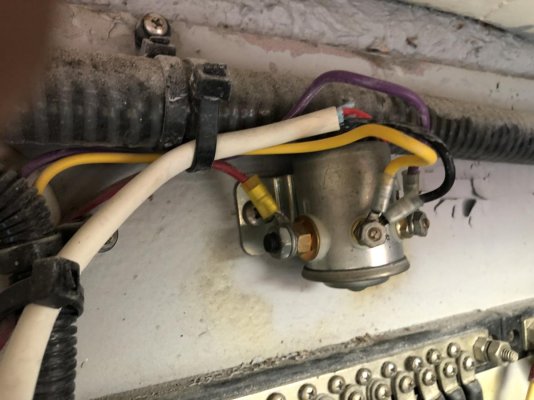Dougcole
Guru
Mainship 400, Yanmar 4LHA-STP. Micro Commander controls. Starting sequence is: 1. Turn on engine breakers. 2. turn off/on/start switch at helm to on. 3. Call for throttles at control box. 4. Push switch to start.
The last few times I've run the boat, on my stb engine, every fourth or fifth start, when I press the start button I've gotten nothing. Push it again and the negine starts right up, no dragging or anything. Today, I went through my sequence and I'm getting nothing. The low oil pressure alarm sounds (as usual) and the control box light comes on, but engine doesn't even click. Paralleled the batteries, nothing. The port engine, which is on the same starting bank fires right up.
I've got 12.7 volts at the main cable coming from the battery to the starter. And 12.7 on the solenoid post.
Tried both the lowe and upper helms thinking it may be the switch and neither works.
I'm not sure how to check for voltage drop because I'm alone at the boat and can't push the switch and hold my meter on the solenoid at the same time.
Suggestions?
TIA.
The last few times I've run the boat, on my stb engine, every fourth or fifth start, when I press the start button I've gotten nothing. Push it again and the negine starts right up, no dragging or anything. Today, I went through my sequence and I'm getting nothing. The low oil pressure alarm sounds (as usual) and the control box light comes on, but engine doesn't even click. Paralleled the batteries, nothing. The port engine, which is on the same starting bank fires right up.
I've got 12.7 volts at the main cable coming from the battery to the starter. And 12.7 on the solenoid post.
Tried both the lowe and upper helms thinking it may be the switch and neither works.
I'm not sure how to check for voltage drop because I'm alone at the boat and can't push the switch and hold my meter on the solenoid at the same time.
Suggestions?
TIA.
Last edited:


